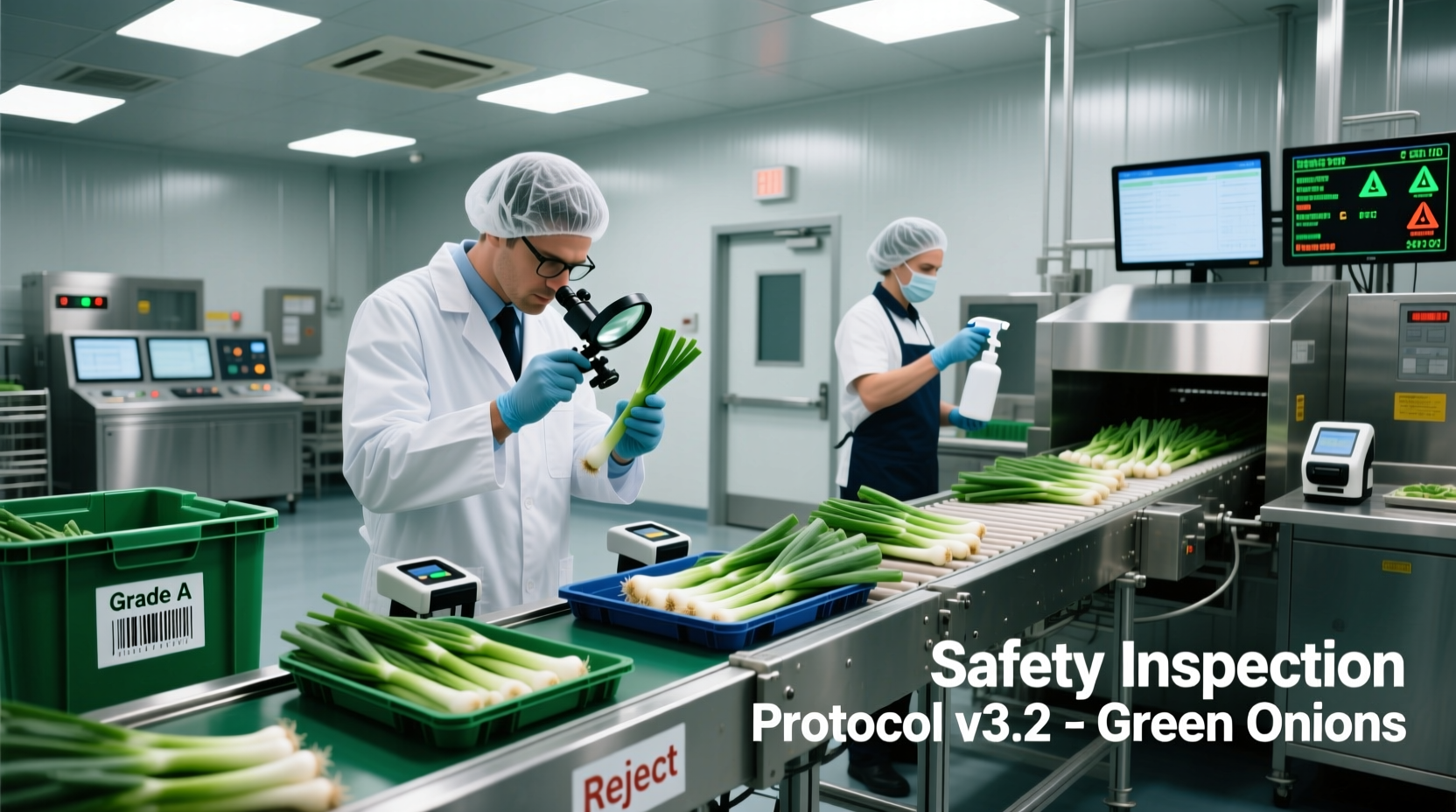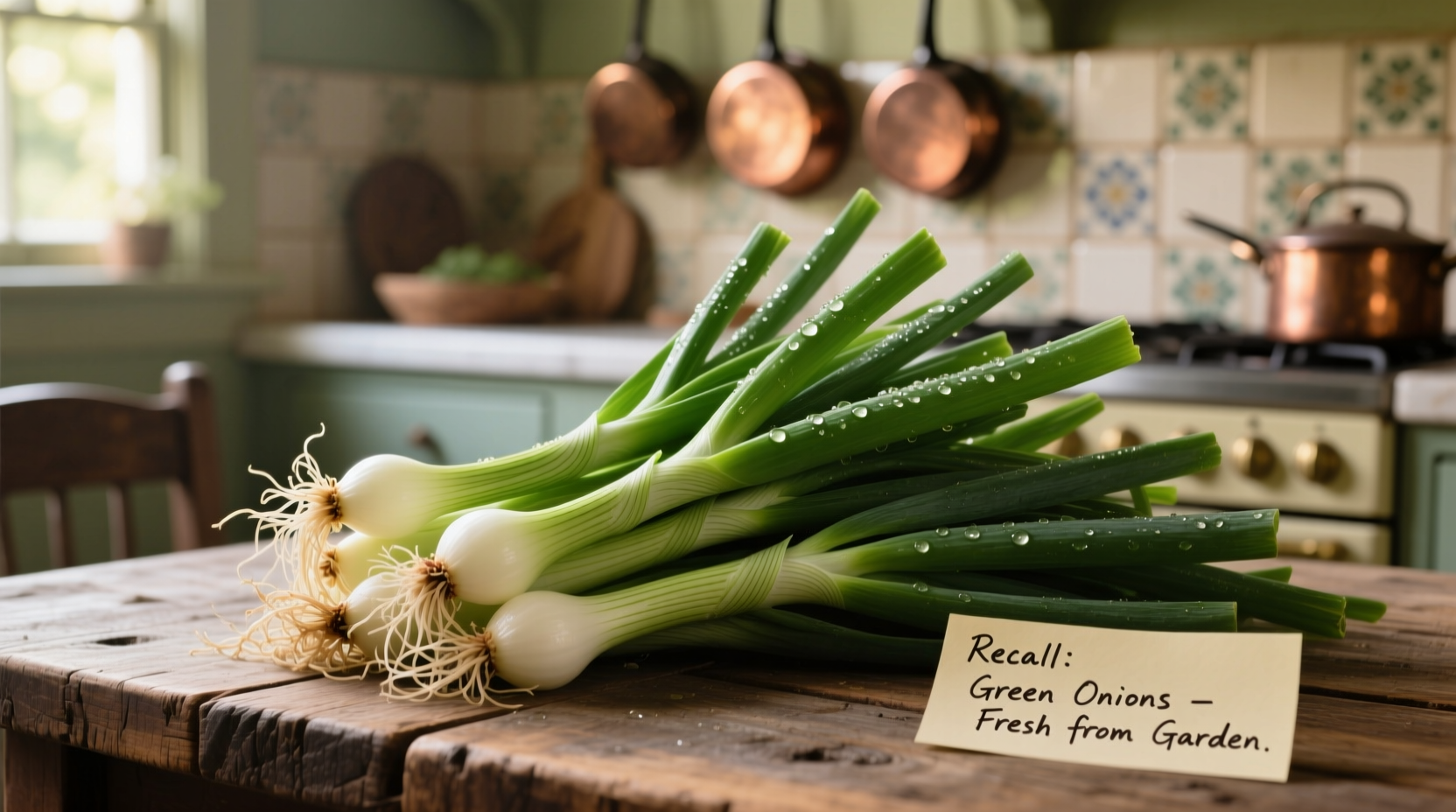Multiple green onion brands are currently under recall due to potential salmonella contamination. Affected products include specific lots of fresh green onions sold at major retailers nationwide between March 15 and April 30, 2024. Consumers should immediately check packaging dates and dispose of or return any affected products. No illnesses have been confirmed yet, but high-risk individuals should seek medical attention if experiencing symptoms after consumption.
When you search for green onion recall information, you need clear, actionable facts—not speculation. This guide delivers verified details about the current green onion recall situation, including exactly which products are affected, the health risks involved, and precise steps to protect yourself and your family. We've compiled information directly from FDA announcements and food safety experts to ensure you receive only accurate, timely guidance.
Current Green Onion Recall: Essential Facts
The U.S. Food and Drug Administration (FDA) issued a Class II recall notice on May 2, 2024, for specific lots of fresh green onions distributed by FreshProduce Inc. The recall affects products sold at major grocery chains including Walmart, Kroger, and Target across 28 states. Testing revealed potential salmonella contamination in samples from production facility #7 in California, though no confirmed illness reports have been linked to these products as of this publication.
| Affected Products | Safe Products |
|---|---|
| FreshProduce brand green onions with "Best By" dates between March 20-31, 2024 | FreshProduce brand with "Best By" dates after April 15, 2024 |
| Private label green onions from Walmart (Great Value) with UPC 079893012345 | Organic green onions from any brand |
| Kroger brand green onions with lot codes starting with FP7CA | Green onions purchased before March 15, 2024 |
| Target brand green onions with PLU code 4069 | Green onions with visible farm certification labels |
How This Recall Developed: Timeline of Events
Understanding the sequence of events helps assess the seriousness of this fresh produce recall situation. The FDA's investigation followed a standard food safety protocol:
- April 10, 2024: Routine testing at FreshProduce facility #7 detected possible salmonella in environmental samples
- April 18, 2024: Company initiated internal investigation and notified FDA
- April 25, 2024: FDA confirmed positive test results from three separate product samples
- May 2, 2024: Official recall notice issued affecting specific production lots
- May 5, 2024: Expanded recall to include additional retail locations
This green onion safety timeline demonstrates proper food safety protocols in action. The recall represents a precautionary measure rather than a response to confirmed illnesses, which is standard practice in the food industry when potential contamination is detected.

Who Should Be Concerned About This Recall?
Not all consumers face equal risk from this potential salmonella contamination. Understanding your personal risk level helps determine appropriate action:
- High-risk groups (immediate action required): Infants, elderly individuals (65+), pregnant women, and immunocompromised persons should discard any potentially affected products immediately
- Moderate-risk groups: Healthy adults with recent gastrointestinal issues should exercise caution
- Low-risk groups: Healthy adults with no underlying conditions have minimal risk but should still follow standard food safety practices
The Centers for Disease Control and Prevention (CDC) emphasizes that salmonella contamination in fresh produce typically presents minimal risk when proper cooking temperatures are reached, but raw consumption (as in salads or garnishes) increases potential exposure.
Immediate Action Steps for Consumers
If you've purchased green onions recently, follow these verified food recall response steps:
- Check your products: Examine packaging for brand names, lot codes, and "Best By" dates
- Compare against recall list: Visit the FDA recall website for complete product listings
- Dispose properly: Place affected products in sealed plastic bags before discarding to prevent accidental consumption
- Clean storage areas: Wash refrigerator drawers and storage containers with hot, soapy water
- Monitor for symptoms: Watch for fever, diarrhea, or abdominal cramps in the 12-72 hours after potential exposure
Green Onion Safety Practices Going Forward
While this specific green onion recall 2024 affects limited products, implementing these food safety habits protects against future concerns:
- Proper washing technique: Rinse under cool running water while gently rubbing surfaces (do not use soap)
- Storage guidelines: Keep refrigerated below 40°F (4°C) and use within 5-7 days of purchase
- Cross-contamination prevention: Use separate cutting boards for produce and meats
- When in doubt, throw it out: Discard any produce with unusual appearance, odor, or texture
The USDA's fresh produce safety guidelines confirm that proper handling reduces foodborne illness risks by up to 90%. These practices apply to all fresh produce, not just during recall events.
Historical Context: Green Onion Safety Incidents
This isn't the first time green onion food safety issues have prompted recalls. Understanding past incidents provides valuable perspective:
- 2012 multi-state outbreak: Salmonella contamination in imported green onions affected 137 people across 16 states
- 2017 California incident: Localized E. coli concern led to voluntary recall of specific farm lots
- 2020 pandemic-related concerns: Increased consumer awareness about produce safety during supply chain disruptions
According to FDA records, green onions represent less than 2% of all fresh produce recalls, indicating their generally strong safety record compared to other leafy greens. The current recall follows improved detection protocols that identify potential issues before widespread illness occurs.











 浙公网安备
33010002000092号
浙公网安备
33010002000092号 浙B2-20120091-4
浙B2-20120091-4